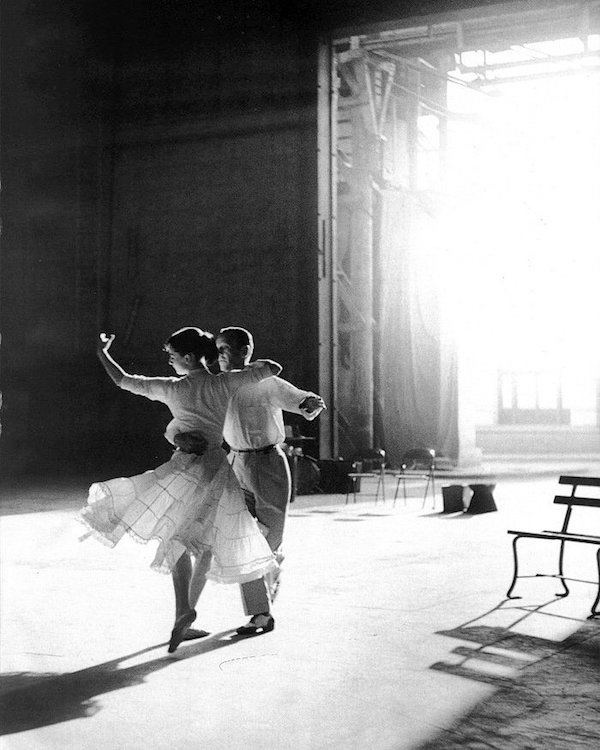Legend has it that when Fred Astaire auditioned for his first Hollywood film, the casting agent made a note that said: “Can’t act. Can’t sing. Can dance a little.” That person must have been kicking themselves for the next half a century as Astaire constantly redefined filming techniques, the genre of movie musicals, and what it means to fall in love on the dance floor.
From a young age Fredrick Austerlitz was gyrating around the house, no doubt driving his parents crazy. He and his elder sister Adele had a popular vaudeville act that showcased their tap dance and comedy skills. They quickly outgrew the Midwest venues and landed a Broadway show in 1917. She eventually eschewed the stage to marry Lord Cavendish, the second son of the Duke of Devonshire. This left Fred, now renamed Astaire, free to find a new partner and head for Hollywood.
His first movie didn’t give him a major starring role, but it did pair him with Ginger Rogers. The two would make nine smash hits together at RKO studios. The romantic comedy plots varied little – Rogers as the reluctant woman trying to fend off Astaire’s clumsy advances – but they gave ample space for the pair to create some memorable scenes. The combination of stellar choreography, catchy American Songbook standards and gorgeous gowns made for delectable visual candy during the Great Depression.
In 1934, Astaire reprised the popular stage show in The Gay Divorcee. The comedy of errors was nominated for three Oscars marking a watershed moment in musical moviemaking. The following year, the duo returned in Top Hat, another daffy musical comedy. Their “Cheek to Cheek” number and Astaire’s “Top Hat, White Tie and Tails” are stunners. There is also a beautiful, wistful number in “Isn’t It A Lovely Day To Be Caught in the Rain” and a small cameo from Lucille Ball.
“Ginger was brilliantly effective. She made everything work for her. Actually, she made things very fine for the both of us and she deserves most of the credit for our success.” — Fred Astaire
After Follow The Fleet, Astaire and Rogers starred in Swing Time, debuting “The Way You Look Tonight,” then released Shall We Dance, probably my favorite of their films. It is full of gorgeous Gershwin tunes, including a rendition of “Let’s Call The Whole Thing Off” on roller skates. Yes, tap dancing on roller skates.
“I’m just a hoofer with a spare set of tails.” — Fred Astaire
As the 1930s came to a close, Astaire began experimenting with his starpower. He made Damsel In Distress with Joan Fonatine, George Burns, and Gracie Allen. It was the first of his films to lose money and many people consider it a weak movie, but I love it. It’s based on the hilarious book by P.G. Wodehouse, uses Burns and Allen well, has some amazing choreography from Hermes Pan, and features more Gershwin tunes.
The 1940s brought a jauntier style from Astaire. The hoofer in him came out a bit more in American songbook revues like Holiday Inn and Technicolor splendors like Easter Parade. In each, he and his co-stars debuted a number of smash hits songs for Irving Berlin, including “White Christmas,” which won the Oscar for Best Song and remains the world’s best-selling single in history. Astaire also displayed a playful yet disciplined skill in his percussive number “Drum Crazy.”
Astaire continued to experiment with camera tricks in Royal Wedding. It’s not the most engaging plot, but the “Dancing on the Ceiling” number is inventive and joyful. After Gene Kelly staged massive on-screen balletic operas in An American in Paris and Singin’ in the Rain, Astaire further innovated his filmic style with similar longform numbers.
“You know, that Gene Kelly, he’s just terrific. That’s all there is to it. He dances like crazy, he directs like crazy. I adore this guy. I really am crazy about his work.”
Astaire answered with his own ballet dream sequence starring the stunning Cyd Charisse in The Band Wagon. He is a detective searching the gritty underbelly of city, ducking murders, and fending off femme fatales. Astaire and Charisse also share a beautiful pas de deux in “Dancing In The Dark.” The two would be reunited in Silk Stockings, a musical adaptation of Ninotchka.
Astaire never considered himself a classical ballet dancer, but his grace and physicality made up for any lack of formal training. My favorite of his later films is Funny Face with Audrey Hepburn. Astaire adored working with her, and they had amazing on-screen chemistry despite their age difference. It also gave Hepburn a chance to display her own dancing skills.
“I just told my agent to forget all other projects for me. I was waiting for Audrey Hepburn. She asked for me, and I was ready. This could be the last and only opportunity I’d have to work with the great and lovely Audrey Hepburn and I was not missing it. Period.”

Astaire largely retired from musical film in the 1960s as the genre’s popularity waned. He did host a couple of That’s Entertainment compilations, he lent his voice to several animated television specials, and even showed up in small roles in movies like The Towering Inferno. Then there was the time he cut loose at the 1970s Oscars.
Astaire died at 88 a beloved actor, singer and dancer. So, yeah, he could dance a little.
“Do it big, do it right, and do it with style.” – Fred Astaire
